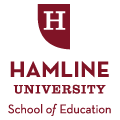How do Contract Alternative Schools work to close the Achievement Gap?
Term
Spring 4-28-2015
Capstone
Thesis
Degree Name
MAEd
Primary Advisor/Dissertation Chair
Laura Haldin
Secondary Advisor/Reader One
Trinity Raw
Peer-Reviewer/Reader Two
Hala Asamarai and Diane Durnick
Abstract
The research question addressed in this project was: How do Contract Alternative Schools work to close the Achievement Gap? This capstone explores what constitutes an alternative school and analyzes what successful schools do. It also explores the achievement gap; the causes and how to close it. The work of Reeves and Brown, Benkovitz, Muttillo, and Urban contribute to understanding the achievement gap can be closed by instituting elements, many of which complement those recommended by Raywid. I interviewed the directors of five contract alternative schools to determine if they are closing the achievement gap. My research found the schools are implementing many best practices, but a better means of measuring them is needed to determine closing the achievement gap closure. Despite this need, it is apparent contract alternative schools do have an important role to play to reaching all students and thereby closing the achievement gap.
Keywords
Achievement, At-risk Students, Grades/ Student Performance, Alternative Schools
Recommended Citation
Benson, Kate Louise, "How do Contract Alternative Schools work to close the Achievement Gap?" (2015). School of Education and Leadership Student Capstone Theses and Dissertations. 112.
https://digitalcommons.hamline.edu/hse_all/112

